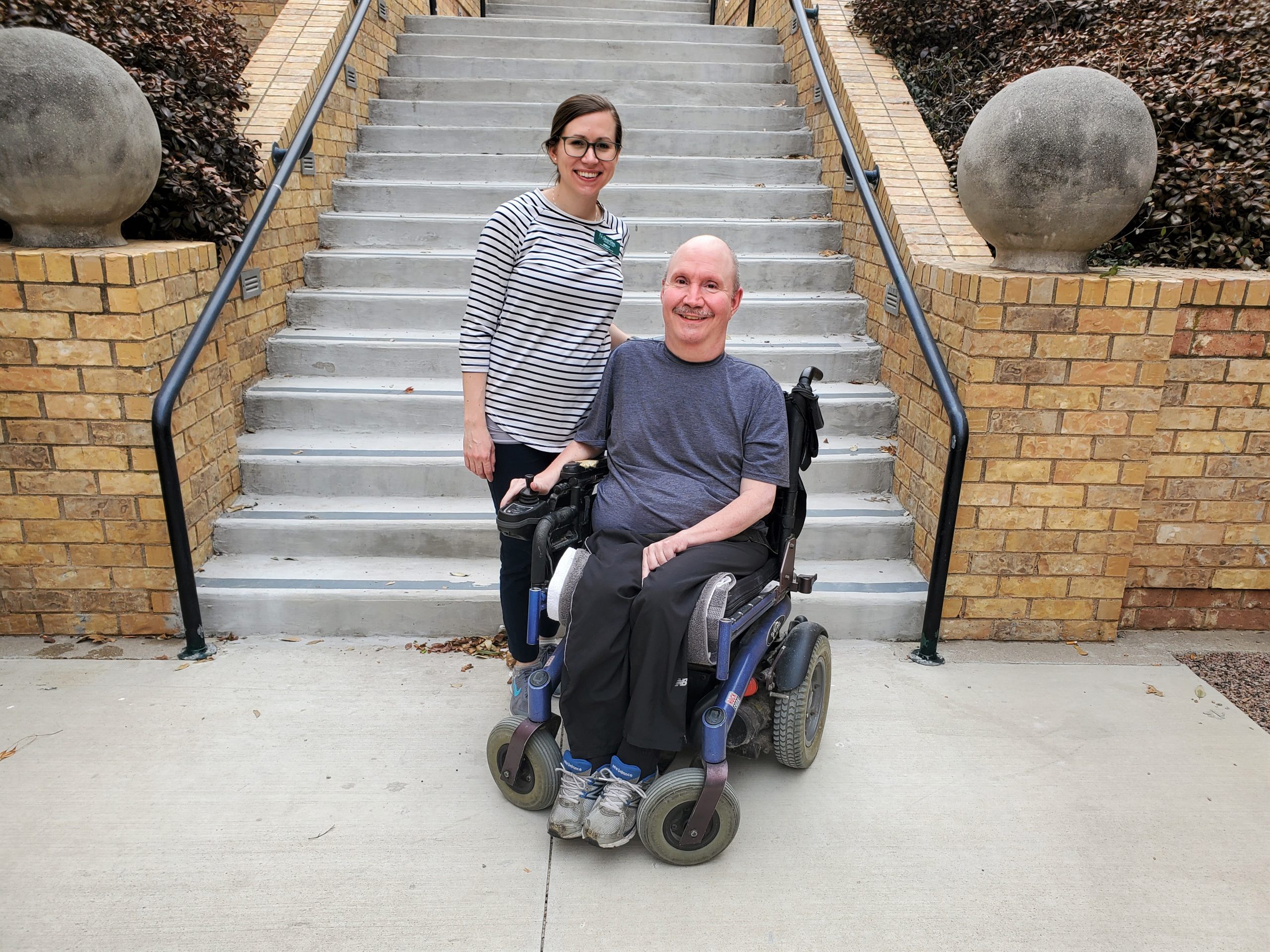The Dangers of Pressure Ulcers For SMA Patients

People with SMA spend most of their time sitting in a wheelchair. Because of this, they are at an increased risk of developing pressure ulcers. This is due to the increased time spent with weight-bearing through a specific area, usually, a bony prominence, such as the “sit bones,” although they could occur anywhere. The risk is decreased if the patient can perform weight shifting throughout the day or can get out of their chair and change positions frequently.
There are four stages of pressure ulcers that are graded from one to four depending on how deep the wound is. A stage one pressure ulcer has no break in the skin and no blanching of the wound, meaning there is redness in the area, but it doesn’t change color when you apply pressure to it. To become stage two, the wound becomes open down into deeper layers of the skin and forms a shallow crater. During stage three, the crater becomes deeper and you may see some fat, but no muscle, tendon, or bone. Stage four means that there are visible bones, muscles, and/or tendons. During a stage three or four pressure ulcer, there may be little to no pain due to the amount of damage done in this area.
Once there is a pressure ulcer formed, it is important to manage it appropriately to reduce the risk of infection as well as reduce the risk of the ulcer becoming worse. Getting off of this area when minimal redness is noticed is key to reducing the progression of the sore. If there is a breaking of the skin, it may be best to consult with a wound care nurse or doctor. Weight shifting throughout the day is a great way to reduce the risk of developing any redness, especially on bony prominences. Michael recently suffered from a pressure ulcer that he had a hard time treating on his own. This isn’t something that he frequently suffers from, but as we age, our skin loses integrity and therefore increases the risk of developing ulcers.
Michael had a stage two pressure ulcer on the inside of his right leg near his groin region and unfortunately, his normal caregivers were out of town. He was unable to transfer frequently throughout the day to get off of the area and reduce the soreness and weight-bearing through that area. This required him to be hospitalized to treat the ulcer before it became any worse. This was addressed before the ulcer passed stage two which allowed for quicker recovery.
Knowing that this could potentially become a more frequent problem for Michael, we will begin practicing and discussing different weight shifting options throughout the day while he has to be sitting up in his chair during work hours. We will begin with using a rolled-up towel and placing it under different areas of his legs and bottom to shift weight off of one side for a minimal time, and then shift it to the other side. Since Michael has good seated core control, he will be able to maintain an upright posture during these positions for prolonged periods. Another option we will attempt will be placing his lower extremities in a figure four position to offset pressure from one area to another for a few minutes and then switching sides. Since Michael isn’t currently using footrests, another option will be to place his feet on a footstool with knees pushed up off of his wheelchair for a given amount of time.
Using different positional techniques will require you to be familiar with your patient and their ability to maintain different positions depending on their flexibility and strength. Although we have specifically discussed a patient with SMA, these weight shifting techniques can apply to any person who is in the same position throughout the day and is unable to perform frequent weight shifting independently. Different techniques can be applied to a person who is required to be in a bed for prolonged periods. Usually, this population of individuals are put on a rolling schedule, meaning someone will assist them in rolling from their back to their side every two hours, making sure to offload any bony prominences with pillows and other propping devices.
Preventing pressure ulcers is the primary goal when performing good weight shifting and offloading, but with some populations, especially those at high risk, pressure ulcers will happen from time to time. Having good techniques to recognize them early and treat them as well as prevent them from getting worse is very important. Educate your patients on what to look for, such as redness that doesn’t go away when weight is shifted, as well as common places your patients may find them, mostly bony prominences. With this knowledge, your patients will be at a decreased risk of developing ulcers and therefore able to continue their progress towards their goals.

